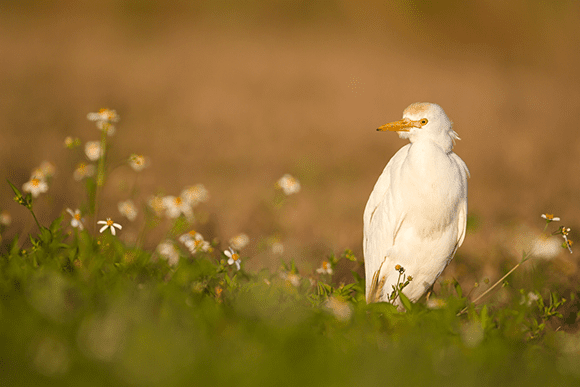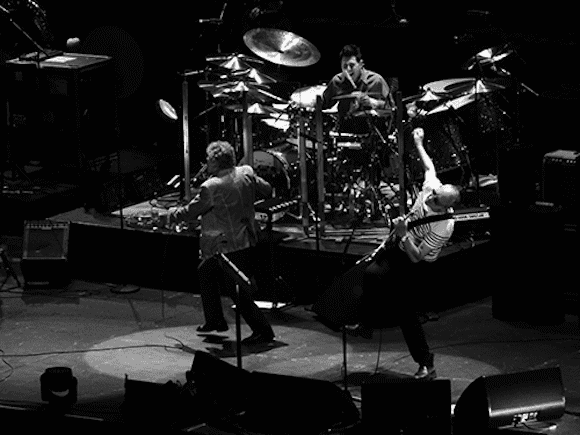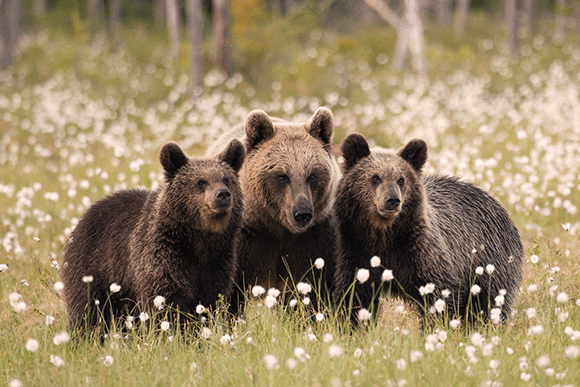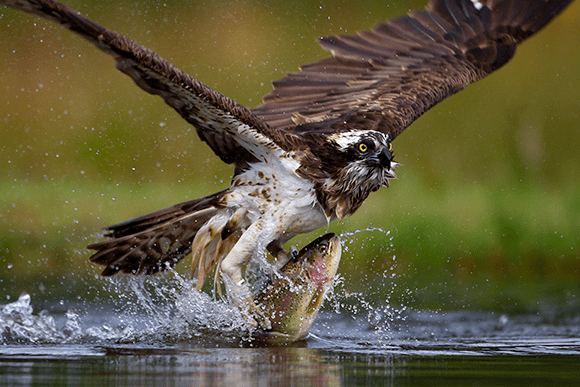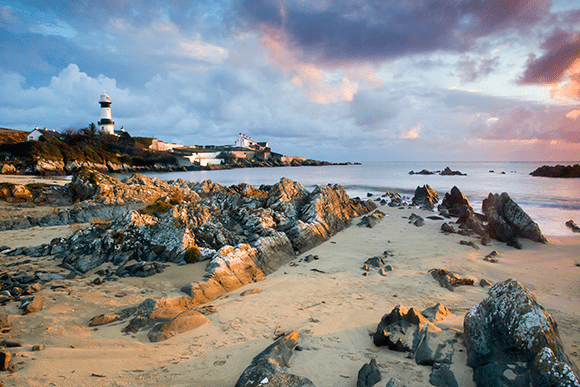You’re probably thinking “I thought this was the Petri IT Knowledgebase?” As it happens, photography is a common hobby for IT pros. You’ll find people like Mark Minasi (famous speaker, author, teacher, consultant and journalist), Nathan Winters (Microsoft technical sales, and speaker/author), and myself enjoy photography for the same reason we like IT: There’s a technical challenge in understanding the equipment, getting the most out of it, and pushing ourselves to excel… and we can mix in some IT skills to make the process smoother. In this article I will give you some photography tips, discuss the equipment, and talk how I use photo software and computers to process, store, and backup my images. There should be something here for the family snapper, the prospective photographer, or simply the person who wants to ensure that their family pictures are safe.
Photography Vs. “Taking Pictures”
There is a distinct difference between a person who takes pictures and a person who is into photography. A person who takes pictures wants to capture moments of their life, be they the first steps of a loved child, sights on a vacation, friends enjoying a night out, a memorable concert, or a “selfie.” The process is usually very simple: point and shoot.
Photography is a pursuit of excellence. For some it’s about achieving technical perfection. For others it’s about creating art. For the best, it’s a bit of both. But one thing is clear: Photographers do not just “point and shoot.” They learn how the camera and lens work and use that knowledge to compose a picture before shooting. Some will spend maybe weeks planning a single photograph of a model; take hours crawling into a location where light, background, and a wild subject meet to create a desirable photo opportunity; or drive and/or hike for hours to find the perfect location for a landscape – and then wait for the perfect cloud to float by before clicking the shutter button.
This was composed to include the flowers and get a low angle and subject emphasis. (All images by Aidan Finn)
Cameras
There is no “best camera” – it all depends on what it is you want to do and what you can afford.
Economic Camera Options
If you want to take simple snaps, then a camera like the Nokia Lumia 92x, the Samsung S4, or even the crazy 41 megapixel Nokia Lumia 1020 (in my opinion, the pictures are really worth the hype) all do a fantastic job.
Maybe you want a little more quality, but you still need economy and convenience. Pocket cameras range from the modest to Transformer-like machines (in which a 22X lens appears from nowhere) offer decent quality and simplicity through automation.
The Who taken from the cheap seats – and using a compact camera.
Mid-Range Camera Options
Bridge cameras offer more creativity and control than a compact camera can offer. Bridge cameras have a bigger lens that is built into the camera, a large grip, more buttons on the back, and may even have a view finder. The sensor is bigger than in the compact camera, making for better quality images with less noise. Noise is a side effect of digital photography that creates a grain and speckles of color that lessen detail and quality (normally seen when you zoom in or shoot in lower light).
High-End Camera Options
At the upper end of the market is the single-lens reflex (SLR) camera. This is a camera body, used by the professional or enthusiast photographer, that features interchangeable lenses. The photography world, much like the IT world, has its divisions. Which is better: Hyper-V or vSphere? Digital SLR (DSLR) or film SLR (35 mm)? Modern DSLRs take amazing pictures, capable of shooting a great speed and in very low light without sacrificing much quality, and a low cost of ownership. On the other hand, film has a certain quality to it, and although stock is becoming difficult to find, many artists prefer 35mm over digital photography.
Low light photo of a Brown Bear family.
The DSLR world has a Microsoft-versus-Apple sort of divide with Canon and Nikon. There is no better manufacturer, as they both make amazing cameras and lenses. And like Linux, manufacturers such as Sony make great DSLRs, often with features not in the “big 2.” Unfortunately, getting lenses for DLSRs outside of the Canon & Nikon world is a little more difficult.
What’s the right DSLR to get? That’s like asking which computer is right for a particular user. Again, it all depends on what kind of photography you want to do and what your budget is. If money is no object, then sure, go for that Nikon D4 or Canon 1DX. Those are the cameras you see on the sideline of a football game or the Olympics 100 meters. Frankly, not many people really have a need for such a camera; those machines are all about low light image quality, focus speed, and taking pictures like a machine gun. Most people will be happy with the entry-level DSLRs (hundreds of dollars) or a medium-level device (a few thousand dollars), that is still perfect for portrait or landscape photography.
Lens Fever
I often warn people buying their first DSLR about a disease called “lens fever,” in which they will enter a permanent state of always wanting the next best lens. The camera might come with a kit lens, but you’ll soon discover the limitations of this budget hardware if you push yourself.
Some lenses are designed for focusing on really close subjects like insects or flowers. Some lenses are short for wide scenes like landscapes. Medium-length lenses are often used for portraits, and long (expensive) lenses are used for wildlife and sports. A good tip is to experiment for a while, find what it is you want to photograph, and do some research. Believe me, you won’t be the first person to ask for lens advice. In lenses, the old adage is true: You get what you pay for. Save if you have to, and get the best you can afford; it’s cheaper than upgrading when you hit the limitations of the budget option.
Osprey taken at 1/1250th second on a 500mm lens.
Light
Photography is all about light. It might seem odd, but the best light is not when the sun is at its highest. Photographers are like vampires: We hate the sun. I joke that when I need a vacation after I go on vacation, because I set my camera up long before sunrise and might be there until after sunset. We seek the soft golden light and long shadows that you get only during early morning and late evening. Landscapers want the colorful sky that you see only before the sun rises and after the sun sets, and some even seek out breaks in bad storms to get the contrast of light versus cloud.
Taken just after sunrise to capture the warmth and color in the rocks and sky.
Portrait and fashion photographers prefer to use their own light sources. The pop-up flash has a range of just a couple of feet; that’s why you’ll see photographers giggling like nerds when thousands of little lights flicker pointlessly during the kickoff of a Superbowl – it looks pretty but ultimately accomplishs nothing. Real flashes start at several hundred dollars, require their own power source, and have a range that varies on budget spent. Those seeking the best portraits want to position the flash far away from the camera and to have many lights. And that’s why you see studio lights working in unison around the subject and under the control of a wired/infrared/radio trigger that is placed on the camera. This allows different effects, colors, and shadows to be projected to create a 3D effect.
Back to IT: Photography and Software
Every digital camera produces JPEG images by:
- Letting light in through the lens and the shutter to the sensor
- Capturing light and color
- Dispensing with lots of that information
- Adding effects such as sharpening (making the edges of detail more pronounced), increasing color saturation, white balance (blue/red and tint), adding contrast, converting to black and white, and so on.
The camera is processing the image, without much control from you, and much of the detail captured by the sensor is dispensed with. Enthusiasts hate JPEG for this reason, and because every save reduces the quality of this compressed format. More expensive compacts, bridge cameras, and all DSLRs also can take RAW pictures. This is a much larger file that retains all detail. RAW files have no in-camera processing so they look inferior to JPEGs at the first glimpse, but they offer much more potential.
Most people will use one Adobe package or another to edit their photographs. A budget option is Elements, which contains the core pieces of Photoshop CS. Adobe Lightroom costs a little bit more, but its strength is that inlike the Photoshop family of products, Lightroom was designed for photographers rather than for graphic artists. The entire digital workflow is laid out and easy to discover. Content can be catalogued for easy discovery, and many plug-ins exist to add functionality, such as uploading to Flickr for online sharing.
Photoshop CS is the most expensive option, available both off the shelf and as a cloud subscription (local install) service. Contrary to ill-informed myth, editing is a necessary step in digital photography, just as processing is in film photography. Editing or processing is the second last step (before printing) to complete an image. If done right, each image takes only a few minutes, although some artists may spend hours, days, or weeks to accomplish their goals that take the image beyond just photography.
I use a Windows 8 PC as my editing machine. There is a great reason to use Windows 8: Storage Spaces allows me to use a use a bunch of USB 3.0 external drives as a single fault tolerant unit that costs a tiny fraction of what a reliable RAID array would. The storage is fast – 16 megapixel RAW files (19 MB) open in a second or two. The storage is reliable – a mirrored virtual disk spans 2 * 3 TB drives allowing one drive to fail without any data loss. I use File History to back up my library to another USB 2.0 hard drive so I also have an archive. If your library is small you might consider an online backup service, but when you shoot wildlife in RAW for years, a terabyte-sized library doesn’t take long to appear, and that’s a tough one to maintain online over domestic broadband.
A Huge Hobby
I’ve reached the end and I’ve not yet talked about bags, tripods, heads, graduated, neutral density and polarizing filters, printers, paper, color profiling, and more. If you enjoy computers and IT, then there’s a good chance that you’ll love the technical nature of photography, learning how the machines work, tuning them, and maybe even getting outside to enjoy the wonders of the world. Photography also has user groups known as camera clubs, and certification programs if you want to pursue an achievement. Maybe I’ll see you on a hillside or in a swamp in the future.
(All images by Aidan Finn)




